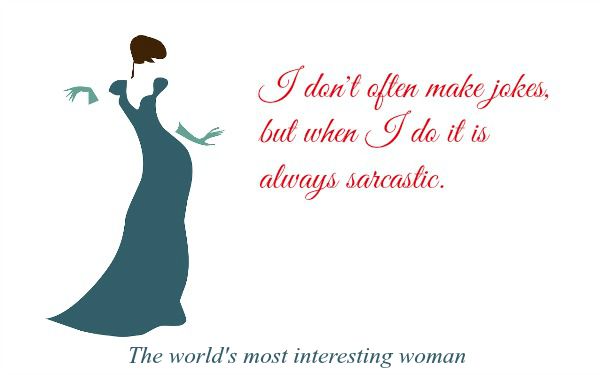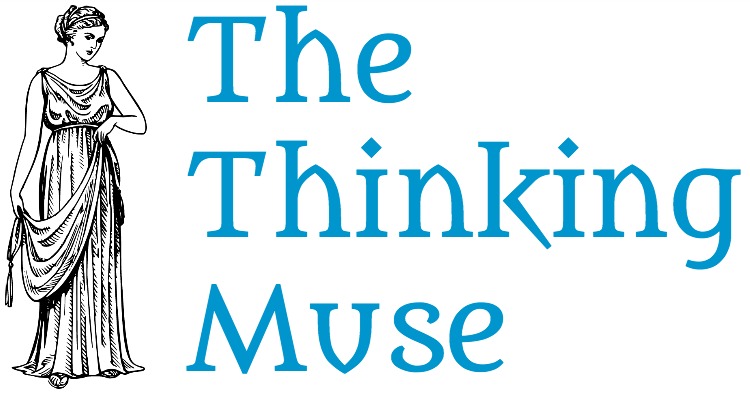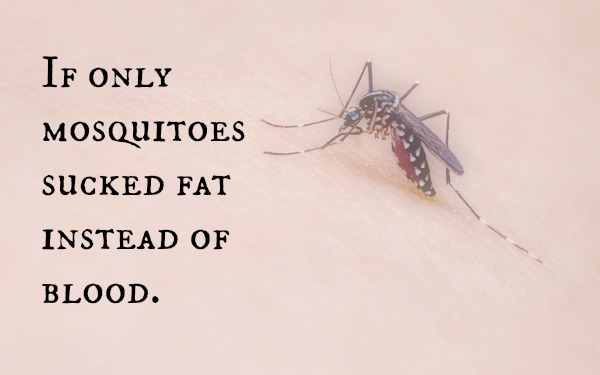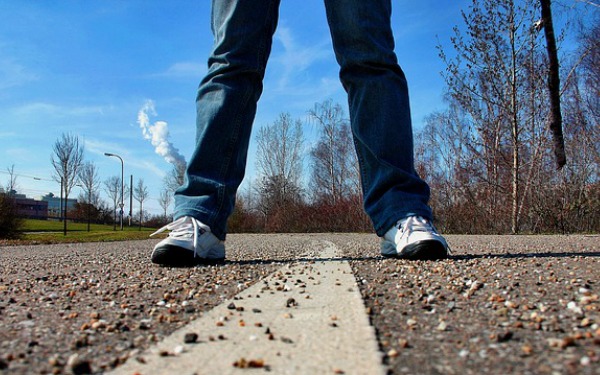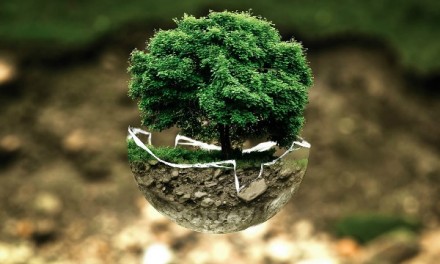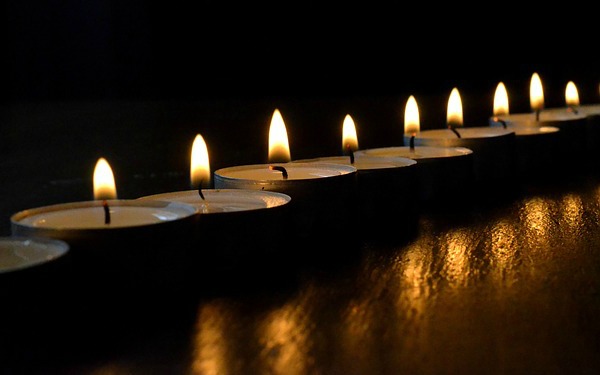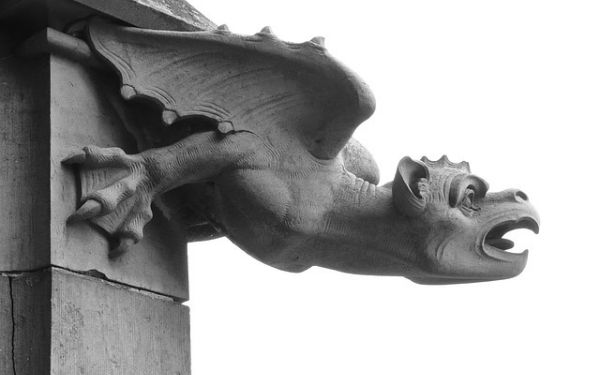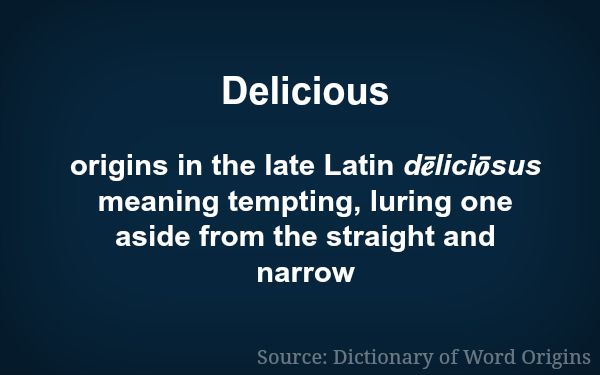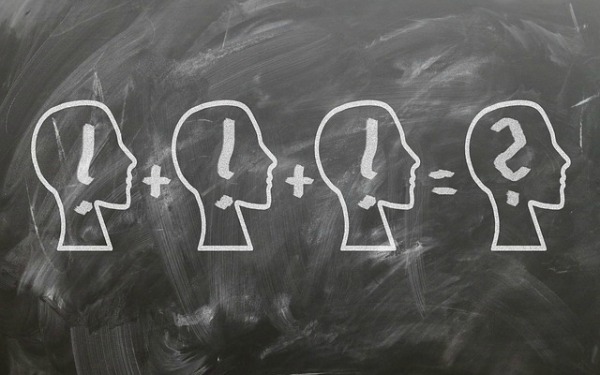Your phone, street signs, logos, and acronyms.
In the blink of an eye you recognize the meaning of so many symbols.
Will those symbols stand the test of time? Will future beings be able to interpret each symbol? Will they understand the meaning in different contexts? For some probably yes, but for others no.
The point is we use many symbols and shortcuts to communicate. One of the greatest advances of our species has been communication. We tell stories. We learn from each other. We make sense of ourselves and the world with communication. It gives us meaning.
(See Related: Why stories are irresistible)
That is why rock art is so fascinating. They are stories set in stone. Safeguarding the wisdom of our ancestors from times long ago. The only catch is there is no glossary. We have to solve the puzzle for ourselves. I don’t know about you, but I am always up for a good mystery.
Rock art terminology
Here are some terms to better understand rock art. These definitions are from the IFRAO glossary. It has a wealth of information worth checking out. I added my own comments in italics.
- Geoglyph– A large motif (usually >4 m) or design produced on the ground, either by arranging clasts (positive geoglyph, stone arrangement/alignment, petroform, earth mound) or by removing patinated clasts to expose unpatinated ground (negative geoglyph).
- Motif– An anthropic mark or connected arrangement of marks on rock, perceived by contemporary humans as forming a single design.
- Panel– A group of rock art motifs occurring in very close proximity, on a rock surface of reasonably uniform orientation.
- Petroglyph– A rock art motif that involved a reductive process in its production, such as percussion or abrasion.
- Pictogram– A rock art motif that involved an additive process in its production, such as the application of paint, dry pigment, beeswax. (often used interchangeably with Pictograph) Stencils and prints also loosely fall into this category.
- Pictograph– A writing character of figurative appearance, representing a word or a syllable; a hieroglyph. (usually the preferred term but often used interchangeably with Pictogram.)
- Rock art– Non-utilitarian anthropic markings on rock surfaces, made either by an additive process (pictogram) or by a reductive process (petroglyph).
The big questions
1. How was rock art made?
Pictographs were painted on using fingers or other tools. In the case of stencils, the paint was blown onto the surface. Whereas for prints, hands or blades of grass were used to stamp paint on.
The most common pigment used is red ochre. Other pigments used natural elements such as clay, plants, charcoal, and bone. The pigment was combined with a binding agent such as blood, saliva, oils, and fat. Beeswax has also been used to create motifs.
As for petroglyphs, stone was likely the tool of choice, possibly metal in more recent creations. Differing techniques such as striking, scratching, or carving were used depending on the tools used and stone being marked.
2. How is age determined?
As you probably guessed, rock art is difficult to date.
In certain environments, a patina will grow on rocks over time. Petroglyph motifs can be created by chipping or scraping the patina off. Slowly, a new patina will develop on the newly exposed surface. The age of the recently developed patina can give an approximation of when the the motif was created.
For pictographs, the organic elements in pigment or binder can be used to radiocarbon date. Unfortunately, this can destroy the motif. Other chemical processes or insight of the people who created the rock art can also help determine age.
Otherwise, knowledge of the geological changes can give hints. If water levels, volcanic activity or other exposure activity can be determined for the area it can be used to narrow down dates.
3. Who made rock art?
The short and simple answer is just about everyone. How do we know? The evidence is all over the world. Identifying the creators of rock art is different in every case. You will see this in the examples given later in this article.
In Australia and the United States, we are lucky. Rock art creators are the ancestors of living cultures today. Some of these cultures have been able to keep their cultural heritage alive through oral histories. The motifs and oral histories combine to tell the story. In some cases, we are even able to identify specific individuals. What an amazing legacy! We can learn so much about the art, and also the people and their culture.
In the case of the Rock Paintings of the Sierra de San Francisco, the artists and their culture are gone. We know little about their history. It is a loss for us all.
Oftentimes we are between these 2 extremes. Some keys can help identify the creators. Obviously, the geographical location is a huge help. The motifs themselves can give us a hint such as using known religious symbolism. History and archaeology can also inform identification. It really is a mysterious puzzle.
(See Related: The secrets of puzzles.)
4. What does it mean?
We won’t ever truly know. The fact remains that we don’t know the context of why the art was created. In fact, it may not have even been intended to be considered art at all. What we do know is, it was important enough to put into stone.
Once again, it is the context that helps shape the story. Place, culture, people, neighboring motifs, religious symbolism, repetition of motifs, and changes over time all come into play when considering meaning. Two similar-looking motifs may have very different meanings. We need to be mindful of our assumptions and limitations when assigning meaning.
Meanings have been construed to be:
• biographical of individuals/groups (life events, victories, etc.)
• territorial (claiming possession of places or things)
• ceremonial (coming of age, religious)
• instructional (hunting practices, seasonal/astronomical signs, water locations)
• spiritual (prayers, magic, ancestral communications)
Keep in mind that many locations and motifs are considered to be spiritual. They are places of worship or places where ancestral spirits reside. For that reason, it is important to take care of the cultural heritage and be gracious and respectful that you are allowed to participate. Remember that your interpretations are just that, your interpretations.
5. What does it mean to be on the UNESCO World Heritage List?
You will notice that quite a number of the examples are on the UNESCO World Heritage List. UNESCO is the The United Nations Organization for Education, Science and Culture.
Being listed identifies the site as one holding universal value for humanity and signifying the importance to protect the cultural and natural legacy for future generations. Once listed, it raises site awareness. The increased awareness often leads to better efforts towards protection and conservation. The site may also receive financial aid and expert support from the World Heritage committee.
Petroglyphs, pictographs, and geoglyphs from around the world
I will now present a sample of rock art from every occupied continent in the world. I tried to include brief facts on each. There are links within the sections and down in the Resources for you to learn more about the listed rock art and more. Sometimes the unknown adds to the mystery of the art.
1. Africa

Tsodilo rock paintings Credit- CJ Huo, CC BY-SA 1.0 via Wikimedia Commons
- Location- Okavango Sub-District, Botswana
- Name- NA, Tsodilo pictographs
- Age- from 155 years old to as old as 2,000 years old
- Who created the rock art- Historically, the site has been occupied by the N/hae and more recently the !Kung and Hambukushu.
- Status- excellent due to its remoteness, its low population density, and the high degree of resistance to erosion of its quartzitic rock
- Notes- This area contains some of the highest concentrated rock art in the world painted on large rock formations. It is known as the “Louvre of the Desert.” It is considered by locals as a place of worship and home for spirits of their ancestors. This site is on the World Heritage List at UNESCO.
- Location- Brandberg, Namibia

White Maiden of Brandberg Credit- Harald Süpfle, CC BY-SA 2.5 via Wikimedia Commons
- Name- The White Lady, pictograph
- Age- at least 2,000 years old
- Who created the rock art- generally accepted as being created by the Bushmen
- Status- severely damaged, protected heritage site of Namibia.
- Notes- It is misnamed because the “Lady” is actually a boy in training to become a medicine man that is depicted in the painting. Here is a video of a visit by guided tour to the White Lady at youtube. The video is nice because it gives you a feel for the area and context.
- Location- Kunene, Namibia

Lion Twyfelfontein Namibia Credit- Thomas Schoch, CC BY-SA 3.0 via Wikimedia Commons
- Name- Lion Man panel, Twyfelfontein petroglyphs
- Age- up to 2,000 years old
- Who created the rock art- local San hunter-gatherer peoples
- Status- well-preserved
- Notes- The site has a large concentration of petroglyphs. They mostly depict animals. The Lion Man shown in the image to the right is popular because he is a lion-man hybrid. The site is UNESCO Heritage listed.
2. Asia
- Location- Madhya Pradesh, India

Bhimbetka rock paintng showing man riding on horse Credit- LRBurdak ,CC BY-SA 3.0 via Wikimedia Commons
- Name- NA, Bhimbetka rock shelters pictographs
- Age- from 500 years old up to 30,000 years old. They are classified into 7 different time periods.
- Who created the rock art- many groups dating back to the stone age
- Status- well preserved
- Notes- The site is UNESCO Heritage listed.
- Location- Najran province, Saudi Arabia

Petroglyph at Bir Hima in Saudi Arabia Credit- Retlaw Snellac, CC BY 2.0 via Wikimedia Commons
- Name- NA, Bi’r Hima petroglyphs
- Age- from 2,600 years old to 2,800 years old.
- Who created the rock art- NA
- Status- NA
- Notes- The location was on the route of the Incense Route with its peak 800-600 BCE. Because of the traffic through the area it is difficult to identify who created the art.The panels are densely illustrated with motifs of battle scenes as well as animals. You can find more information at Arabian rock art heritage.
- Location- Bantimurung, Indonesia

Hands in Pettakere Cave Credit- Cahyo Ramadhani, CC BY-SA 3.0 via Wikimedia Commons
- Name- Pettakere cave (Leang Petta Kere), pictograph stencils
- Age- between 35,000 and 40,000 years old
- Who created the rock art- NA
- Status- NA
- Notes- The site includes 26 stencils of human hands in white and red. In the native dialect the name Leang Petta Kere translates to noble, sacred cave. Note the similarities with the cave from Argentina listed under the South America section.
3. Australia
- Location- Sydney, Australia

Terrey Hills public Credit- Ray Norris and Barnaby Norris, CC BY 2.5 via Wikipedia
- Name- NA, Sydney rock engravings (Terrey Hills), petroglyphs
- Age- from 200 years old up to 5,000 years old
- Who created the rock art- Eora, Darug, and Darkinjung peoples
- Status- NA
- Notes- Some of the petroglyphs include Thylacines and other mammals which have been extinct in the Sydney region for many thousands of years which has helped in dating the motifs. Other more recent motifs show sailing ships which also assisted with dating purposes.
- Location- Kimberley, Australia

Bradshaw rock paintings Credit- TimJN1, CC BY-SA 2.0 via Wikimedia Commons
- Name- Bradshaw Paintings (Gwion Gwion or giro giro), pictographs
- Age- under debate, up to 46,000 but perhaps closer to 15,000 years old
- Who created the rock art- under debate, likely Aboriginal Australians
- Status- deteriorating
- Notes- Many of the motifs were created using beeswax which is used for radiocarbon dating. The origins, dating, and ethnicity of the creators is hotly debated in Australian archeology.
- Location- New South Wales, Australia

Mutawintji National Park Petroglyph Credit- Peter Woodard, Public Domain via Wikimedia Commons
- Name- NA, Mutawintji Historic Site in the National Park petroglyphs
- Age- at least 8,000 years old
- Who created the rock art- Malyankapa and Pandijkali peoples
- Status- NA, protected national park
- Notes- The park contains petroglyphs, pictographs, and stencil pictographs. The motifs are created in sandstone.
4. Europe
- Location-Alta, Norway

Rock Carvings in Alta Credit- Ahnjo, CC BY-SA 3.0 via Wikimedia Commons
- Name- Rock art of Alta, petroglypshs
- Age- up to 5,000 years old
- Who created the rock art- Komsa peoples
- Status- well-preserved, protected
- Notes- The area is north of the Arctic Circle. The panels were covered and protected by turf for a long time before they were revealed. The motifs were carved into the stone and then filled with red ochre paint. There is bear symbolism that is similar to the pre-Christian Sámi religion. The site is UNESCO World Heritage listed.
- Location-Brescia, Italy

Scena di duello Credit- Luca Giarelli, CC-BY-SA 3.0 via Wikimedia Commons
- Name- NA, Valcamonica stone petroglyphs
- Age- up to 8,000 years old
- Who created the rock art- Cammuni tribe, Romans, Herulians, Ostrogoths, Langobards, Franks, Benedictines…
- Status- NA, protected
- Notes- The site has over 140,000 symbols and figures carved in the rock panels. The motifs show images related to agriculture, navigation, war and magic. The location is UNESCO World Heritage listed.
- Location- Ristiina, Finland

Astuvansalmi tellervo Credit- Ohto Kokko, CC BY-SA 3.0 via Wikimedia Commons
- Name- The Tellervo of Astuva (Astuvansalmi rock paintings), pictographs
- Age- up to 5,000 years old
- Who created the rock art- motifs suggests possible links to the Siberian and North European shamanistic tradition or the Lapps/Sami
- Status- NA
- Notes- The motif shows Tellervo, a goddess from Kalevala mythology, holding a bow. She was thought to be the origin of the human race.
5. North America
- Location- Mulegé, Mexico

Sierra de Guadalupe cave paintings Credit- Moomintrollmania, CC BY-SA 3.0 via Wikipedia
- Name- Sierra de Guadalupe cave paintings (Rock Paintings of the Sierra de San Francisco), pictographs
- Age- from 700 years old up to 3,100 years old
- Who created the rock art- the Guachimis
- Status- well-preserved
- Notes- The dry and inaccessibility of the area help the preservation of the caves. The site is UNESCO World Heritage listed.
- Location- San Juan County, Utah, United States of America

Newspaper Rock closeup Credit- Jim, CC BY 2.0 via Wikimedia Commons
- Name- Newspaper Rock at Indian Creek State Park, petroglyphs
- Age- up to 1,500 years old
- Who created the rock art- ancient Puebloan people and more recently the Ute people
- Status- NA, protected
- Notes- The motifs at Newspaper Rock were created in the dark manganese-iron patina left by rain and bacteria on the sandstone rock.
- Location- Lethbridge, Canada

A petroglyph from Writing-on-Stone Provincial Park by D. Windrim, CC BY-SA 2.5 via Wikimedia Commons
- Name- NA, Áísínai’pi (Writing-on-Stone), petroglyphs
- Age- NA, possibly up to 9,000 years old
- Who created the rock art- likely the native tribes of Blackfoot and Shoshone.
- Status- NA, protected as a National Historic Site.
- Notes- The motif shows a warrior with a shield. The site is on the tentative list for UNESCO World Heritage listing.
6. South America
- Location-Santa Cruz, Argentina

Hands at the Cuevas de las Manos Credit- Mariano, CC BY-SA 3.0 via Wikimedia Commons
- Name- Cueva de las Manos Río Pinturas
(cave of hands), pictographs
- Age- from 1,300 years old up to 9,300 years old
- Who created the rock art- the ancestors of the historic hunter-gatherer communities of Patagonia
- Status- excellent but threatened by tourists, protected
- Notes- The paintings were executed with natural mineral pigments – iron oxides (red and purple), kaolin (white), natrojarosite (yellow), manganese oxide (black) – ground and mixed with some form of binder. The site is UNESCO World Heritage listed.
- Location-Atacama Desert, Chile

el Gigante de Atacama Credit- Sznegra, CC BY-SA 3.0 via Wikimedia Commons
- Name- Gigante de Atacama (Atacama Giant), geoglyph
- Age- from 600 years old up to 1,000 years old
- Who created the rock art- possibly the Tiwanaku and the Inca
- Status- NA
- Notes- The giant is 115 meters long and is the largest geoglyph in the world. There is a Spanish video on youtube that shows some Chilean geoglyphs from a helicopter and is worth it even if you can’t understand the audio.
- Location- Easter Island, Chile

Makemake Credit- Rivi commonswiki CC BY-SA 3.0 via Wikimedia Commons
- Name- NA, Rapa Nui National Park petroglyphs
- Age- from 800 years old up to 1,700 years old
- Who created the rock art- the ancient Rapa Nui society
- Status- many are eroded
- Notes- The petroglyph shows Makemake the the chief god of the Tangata manu or Birdman cult along with 2 birdmen in red volcanic rock. The petroglyphs were often overlooked for the statues and shrines on the island. The site is UNESCO World Heritage listed.
From the past to the future
Isn’t it cool to see artwork that has literally stood the test of time? I think it is. Imagine someone taking their time and energy so long ago, making their mark on history. They likely had no idea we would be looking at it in hundreds, if not thousands, of years later trying receive their message. It’s like time travel.
(See Related: How the Lucy fossil and others can help us today)
It hurts my soul to think about the vandalism and graffiti happening to some rock art. Defacing priceless ancient heritage, ugh! We must educate well-intentioned tourists. We can try to diminish the damage due to the environment. We can protect with institutional bodies. We can use common sense steps like “Don’t touch”, “Respect the property/location”, and “Do no harm” when visiting. These places are our collective heritage and can’t be replaced, so pass the word.
What kind of mark will we make on our planet? What will be remembered of us? I don’t know, but I know I want to contribute in a positive way for my family, all humans and our planet. Something to think about.
Have you ever seen any rock art in person? Did it leave an impression on you? If so, please let me know in the poll and comments.
Resources
American Rock Art Research Association from arara.org
Australian Rock Art Research Association from ifrao.com
Conway, Thor. Painted Dreams: Native American Rock Art. Minocqua, WI: NorthWord, 1993. Print.
“Frequently Asked Questions.” Sydney Aboriginal Rock Engravings. CSIRO, n.d. Web.
“IFRAO Glossary.” AURANET. Australian Rock Art Research Association, n.d. Web. 15 July 2015.
“Mutawintji Historic Site | The Foundation for National Parks and Wildlife.” Mutawintji Historic Site | The Foundation for National Parks and Wildlife. Foundation for National Parks and Wildlife, n.d. Web. 14 July 2015.
“Newspaper Rock.” BUREAU OF LAND MANAGEMENT. U.S. Department of the Interior, n.d. Web.
Petroglyph Photo Gallery from geology.com
Petroglyphs.us -A website to promote appreciation for prehistoric Native American pictographs and petroglyphs. A tons of links and information
Pitaloka, Dyah Ayu. “Exploring the Leang-Leang Caves of Maros – The Jakarta Globe.” The Jakarta Globe Exploring the Leang Leang Caves of Maros Comments. The Jakarta Globe, 06 July 2014. Web. 14 July 2015.
Sundstrom, Linea. Storied Stone: Indian Rock Art in the Black Hills Country. Norman, OK: U of Oklahoma, 2004. Print.
“The Puzzling Case of the Atacama Giant.” Ancient Origins. Ancient Origins, n.d. Web. 14 July 2015.
“The Rock Art of Easter Island.” Easter Island Foundation. The Easter Island Foundation, n.d. Web. 14 July 2015.
“Transcripts.” Teaching Heritage. New South Wales Government, n.d. Web. 14 July 2015.
“Twyfelfontein – Namibia.” Twyfelfontein (Namibia). African World Heritage, n.d. Web. 14 July 2015.
Types of Rock Art from Rock Art Research Centre
Wikipedia contributors. “Astuvansalmi rock paintings.” Wikipedia, The Free Encyclopedia. Wikipedia, The Free Encyclopedia, 23 Feb. 2014. Web. 14 Jul. 2015.
Wikipedia contributors. “Bradshaw rock paintings.” Wikipedia, The Free Encyclopedia. Wikipedia, The Free Encyclopedia, 25 Jun. 2015. Web. 14 Jul. 2015.
Wikipedia contributors. “Easter Island.” Wikipedia, The Free Encyclopedia. Wikipedia, The Free Encyclopedia, 14 Jul. 2015. Web. 15 Jul. 2015
Wikipedia contributors. “Petroglyph.” Wikipedia, The Free Encyclopedia. Wikipedia, The Free Encyclopedia, 11 Jul. 2015. Web. 13 Jul. 2015.
Wikipedia contributors. “Pettakere cave.” Wikipedia, The Free Encyclopedia. Wikipedia, The Free Encyclopedia, 1 Jul. 2015. Web. 14 Jul. 2015.
Wikipedia contributors. “The White Lady.” Wikipedia, The Free Encyclopedia. Wikipedia, The Free Encyclopedia, 17 Aug. 2014. Web. 14 Jul. 2015.
Wikipedia contributors. “Writing-on-Stone Provincial Park.” Wikipedia, The Free Encyclopedia. Wikipedia, The Free Encyclopedia, 7 Nov. 2014. Web. 14 Jul. 2015.
World Heritage List from UNESCO
